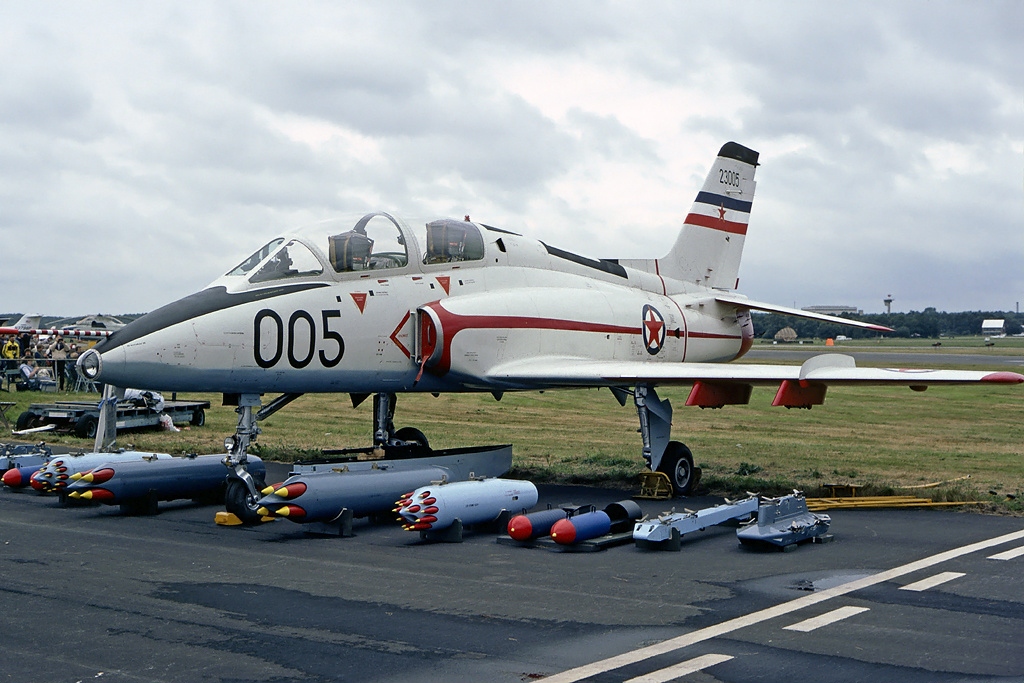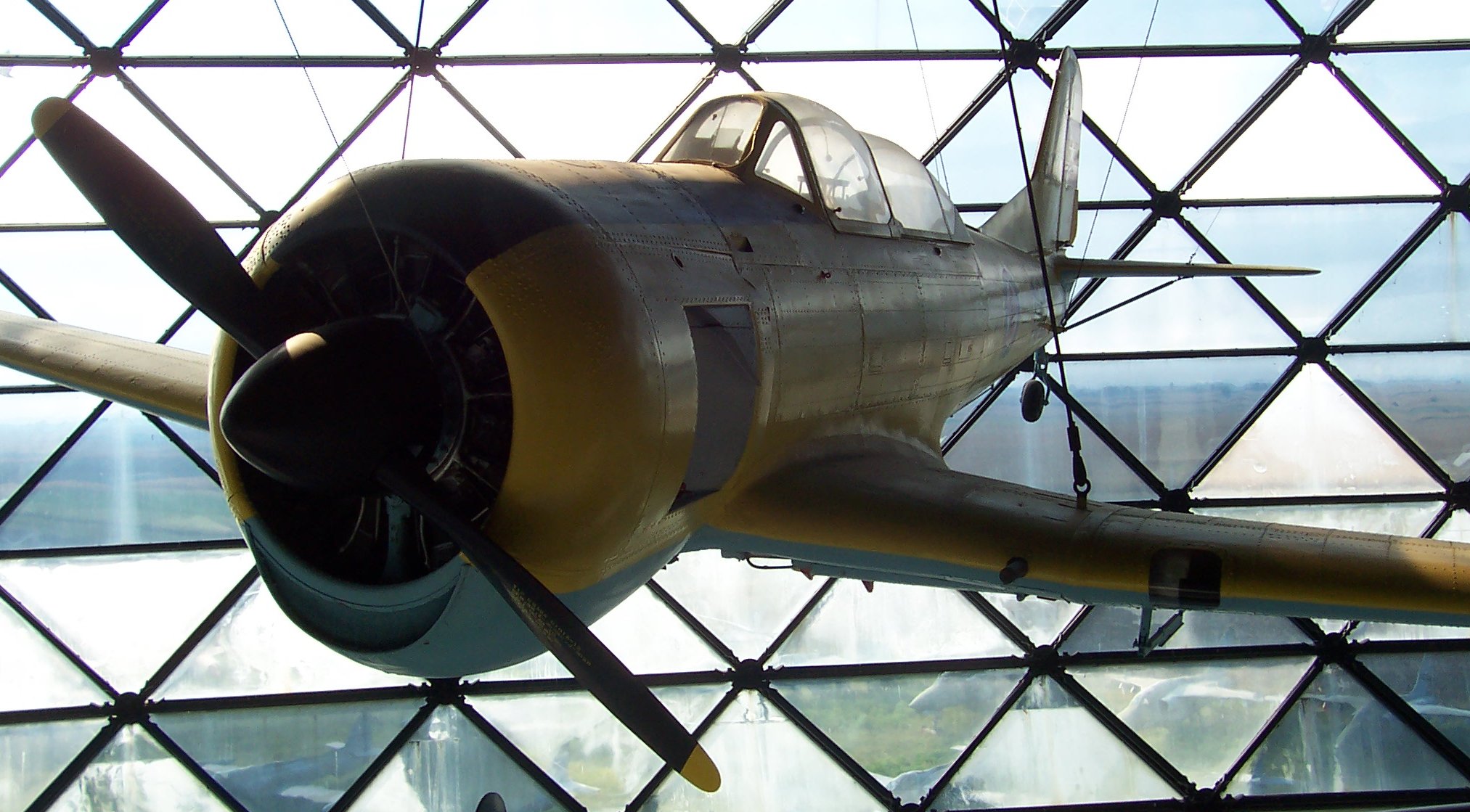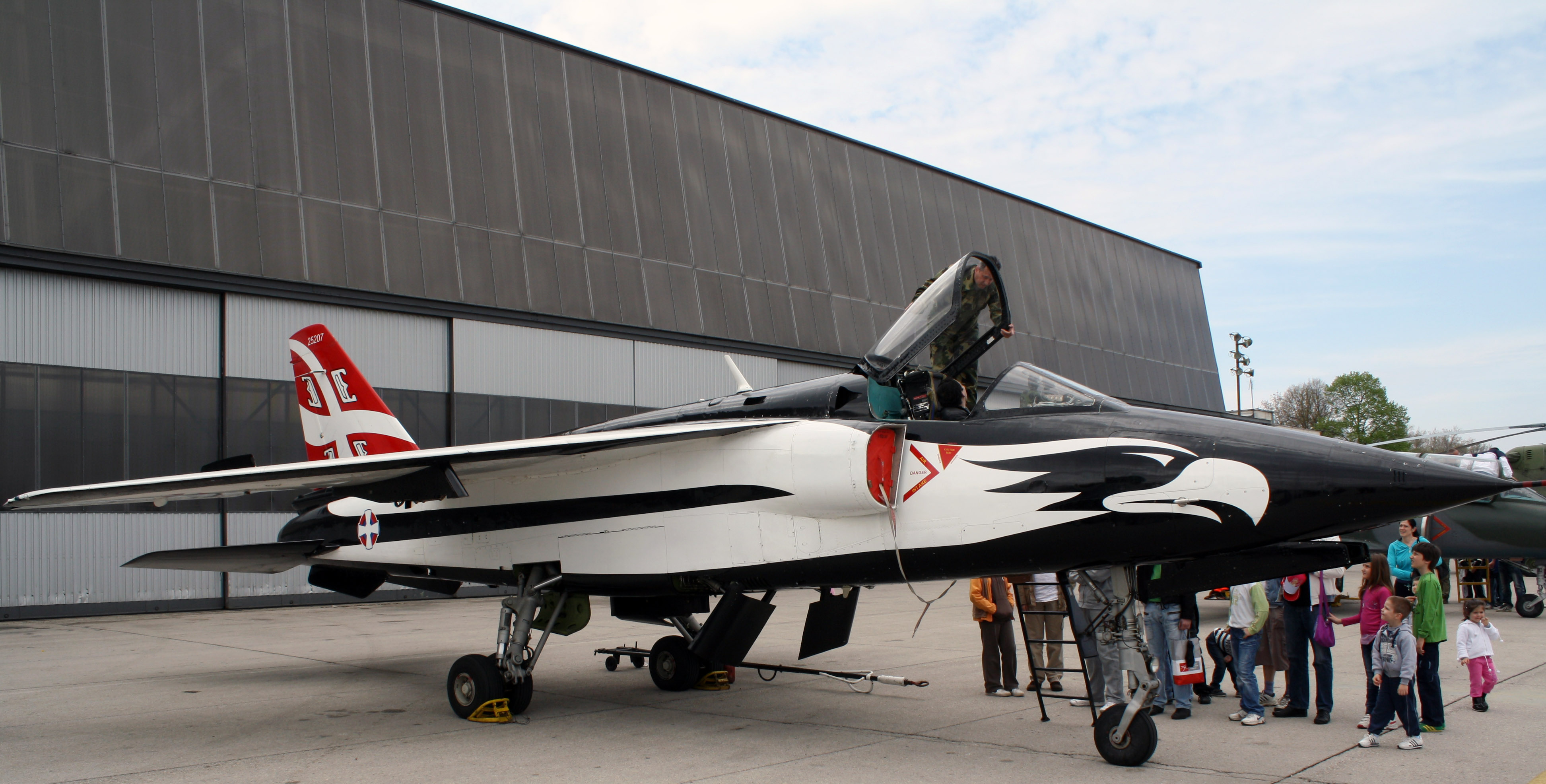|
SOKO
Soko ( sh-Cyrl, Соко) was a Yugoslav aircraft manufacturer based in Mostar, SR Bosnia and Herzegovina. The company was responsible for the production of many military aircraft for the Yugoslav Air Force. SOKO was created in 1950 by the relocation of the aircraft factory section of Ikarus company from Zemun, SR Serbia. Officially founded as "Preduzeće Soko" (Soko Corporation, ''soko'' meaning "falcon" in Serbian), soon after it was renamed "Soko Vazduhoplovna Industrija, RO Vazduhoplovstvo" (Soko Aeronautical Industry, RO Aeronautics). Its first director was Yugoslav People's Army colonel Ivan Sert. The following directors of the company were engineers Miljenko Pješčić and Tomislav Mirić. The serial manufacture of numerous types of aircraft was projected by the Aeronautical Technical Institute in Belgrade. Besides aircraft, SOKO also produced helicopters under licence. Located in the vicinity of Mostar, it mostly used the Mostar Airport for test flights. By the 1980s, ... [...More Info...] [...Related Items...] OR: [Wikipedia] [Google] [Baidu] |
Soko G-2 Galeb
The Soko G-2 Galeb ( en, Seagull) is a Socialist Federal Republic of Yugoslavia, Yugoslav single engine, two-seater jet trainer and light ground-attack aircraft. The G-2 was developed during the 1950s by the Aeronautical Technical Institute at Žarkovo as a replacement for the Lockheed T-33 in service with the Yugoslav Air Force. Production started in 1965 at the SOKO, Soko aircraft factory in Mostar, and ended in 1985 with 248 aircraft delivered. The G-2 had the distinction of being the first Mass production, mass-produced jet aircraft in socialist Yugoslavia."Twenty-Sixth SBAC Show... Military Research Aircraft." ''Flight International'', 19 September 1968. p. 450. It also served as a basis for the single-seat ground-attack J-21 Jastreb. The RV i PVO took deliver ... [...More Info...] [...Related Items...] OR: [Wikipedia] [Google] [Baidu] |
Soko Super Galeb
The Soko G-4 Super Galeb ( en, Super Seagull), also referred to as N-62, is a Yugoslav single-engine, advanced jet trainer and light ground-attack aircraft designed by the Aeronautical Technical Institute at Žarkovo and manufactured by the SOKO aircraft factory in Mostar. The Super Galeb was developed during the 1970s as a successor to, and replacement of, the Soko G-2 Galeb then in service with the Yugoslav Air Force ( sr-Latn, Ratno vazduhoplovstvo i protivvazdušna odbrana – RV i PVO; hr, Ratno zrakoplovstvo i protuzračna obrana – RZ i PZO). On 17 July 1978, the maiden flight was performed by a development aircraft, designated ''G-4 PPP''; during 1983, the first ''G-4'' made its first flight. Quantity production of the type commenced in 1984; the assembly line operated up until the breakup of Yugoslavia in 1991. A total of 85 aircraft were built, most of which went into service with the Yugoslav Air Force, although six G-4s were exported to Myanmar. During the Yugosla ... [...More Info...] [...Related Items...] OR: [Wikipedia] [Google] [Baidu] |
Soko 522
The Soko 522 was a two-seater Yugoslav military training and light attack aircraft produced in the 1950s by SOKO in Yugoslavia. History The ''Soko 522'' was designed by Yugoslav engineers Šostarić, Marjanović and Čurčić at the Ikarus Aircraft Factory in Zemun. The first prototype flew in February 1955. After the initial success of the new aircraft, production was transferred to the Soko aircraft factory in Mostar. Production lasted until 1961 and totalled 110 units. It was used as the primary trainer aircraft for the Yugoslav air force until it was retired in 1978. It gained some fame for its role in war movies filmed in Yugoslavia during the 1960s and 1970s, where it was used to portray the Fw 190 German fighter. Some of its prominent movie roles were in the Yugoslav Oscar candidate ''Battle of Neretva'' and ''Kelly's Heroes'', starring Clint Eastwood. Operators ; *Yugoslav Air Force ** 460th Light Combat Aviation Squadron (1961–1967) ** 461st Light Combat Aviation Squ ... [...More Info...] [...Related Items...] OR: [Wikipedia] [Google] [Baidu] |
Novi Avion
The Novi Avion (Serbian Cyrillic:Нови Aвион en, New Aeroplane) was a fourth generation multi-role combat aircraft programme that was to be built by Yugoslav aircraft manufacturer SOKO. The Avion featured a cropped delta- canard configuration and was to be capable of achieving supersonic speeds under a combat configuration. The Avion shared several areas of commonality with French company Dassault Aviation's Rafale fighter aircraft; France had provided considerable technical assistance to Yugoslavia during the course of the Avion programme. Development work on the fighter was undertaken by the ''Vazduhoplovno Tehnički Institut'' (VTI) ( Aeronautical Technical Institute) of Belgrade, the former Yugoslavia's main military-technical institute, in cooperation with Dassault Aviation. Upon its entry to service with the Yugoslav Air Force, which was anticipated to occur during the late 1990s to early 2000s, the Avion would have been used as a replacement for the nation's ag ... [...More Info...] [...Related Items...] OR: [Wikipedia] [Google] [Baidu] |
Soko Orao
The Soko J-22 Orao ( sr-cyr, text=Oрао, translation=eagle) is a Yugoslav twin-engined, subsonic ground-attack and aerial reconnaissance aircraft. It was developed and built in collaboration by SOKO in Yugoslavia and by Avioane Craiova in neighbouring Romania, being known in the latter as the IAR-93 Vultur. The Orao was designed as either a single-seat main attack version or as a combat-capable twin-seat version, the latter being principally intended for advanced flight- and weapons-training duties. It was developed as a joint Yugoslav-Romanian project, known as YuRom, during the 1970s. Early ambitions to produce a supersonic fighter were scuppered by Britain's unwillingness to permit the desired engine to be license-produced in Eastern Europe. Further difficulties in fitting an afterburner to the older Rolls-Royce Viper also hindered development and the performance of early-build aircraft. First flying during November 1974, the resulting aircraft would equip the air forc ... [...More Info...] [...Related Items...] OR: [Wikipedia] [Google] [Baidu] |
Yugoslav People's Army
The Yugoslav People's Army (abbreviated as JNA/; Macedonian and sr-Cyrl-Latn, Југословенска народна армија, Jugoslovenska narodna armija; Croatian and bs, Jugoslavenska narodna armija; sl, Jugoslovanska ljudska armada, JLA), also called the Yugoslav National Army, was the military of the Socialist Federal Republic of Yugoslavia and its antecedents from 1945 to 1992. Origins The origins of the JNA started during the Yugoslav Partisans of World War II. As a predecessor of the JNA, the People's Liberation Army of Yugoslavia (NOVJ) was formed as a part of the anti-fascist People's Liberation War of Yugoslavia in the Bosnian town of Rudo on 22 December 1941. After the Yugoslav Partisans liberated the country from the Axis Powers, that date was officially celebrated as the "Day of the Army" in the Socialist Federal Republic of Yugoslavia (SFR Yugoslavia). In March 1945, the NOVJ was renamed the "Yugoslav Army" ("''Jugoslavenska/Jugoslovenska Armija' ... [...More Info...] [...Related Items...] OR: [Wikipedia] [Google] [Baidu] |
Mostar
Mostar (, ; sr-Cyrl, Мостар, ) is a city and the administrative center of Herzegovina-Neretva Canton of the Federation of Bosnia and Herzegovina, an entity of Bosnia and Herzegovina, and the historical capital of Herzegovina. Mostar is situated on the Neretva River and is the fifth-largest city in the country. Mostar was named after the bridge keepers (''mostari'') who in the medieval times guarded the Stari Most (Old Bridge) over the Neretva. The Old Bridge, a UNESCO World Heritage Site, built by the Ottoman Bosnia and Herzegovina, Ottomans in the 16th century, is one of Bosnia and Herzegovina's most visited landmarks, and is considered an exemplary piece of Islamic architecture in the Balkans. History Ancient and medieval history Human settlements on the river Neretva, between Mount Hum (Mostar), Mount Hum and the Velež Mountain, have existed since prehistory, as witnessed by discoveries of fortified enceintes and cemeteries. Evidence of Roman people, Roman occupation wa ... [...More Info...] [...Related Items...] OR: [Wikipedia] [Google] [Baidu] |
Ikarbus
Ikarbus a.d. (''Ikarbus - Fabrika autobusa i specijalnih vozila a.d.'') is a Serbian bus manufacturer based in Zemun. It was originally established as an aircraft manufacturer in 1923, under the name Ikarus. In 1954, it commenced bus production and since 1960 it completely shifted towards it. In 1992, it changed its name to Ikarbus. History On 13 October 1923, the company was established under name "Ikarus – the first Serbian airplane, car and engine industry Kovačević and Co", with headquarters in Novi Sad. The founders were Dimitrije Konjović, brothers Dušan and Milivoj Kovačević, Đoka Radulović and Josif Mikl. On 20 November 1923, "Ikarus" started business officially after the registration before the Novi Sad District Court. In the beginning, the company manufactured a number of foreign designs under licence, such as the French Potez 25, Czechoslovakian Avia BH-33 and English Hawker Fury; Bristol Blenheim as well as the locally designed Ikarus ŠM, Ikarus IO, S ... [...More Info...] [...Related Items...] OR: [Wikipedia] [Google] [Baidu] |
Yugoslav Air Force
The Air Force and Air Defence ( sh-Cyrl-Latn, Ратно ваздухопловство и противваздушна одбрана, Ratno vazduhoplovstvo i protivvazdušna odbrana ; abbr. sh-Cyrl-Latn, label=none, separator=/, РВ и ПВО, RV i PVO), was one of three branches of the Yugoslav People's Army, the Yugoslav military. Commonly referred-to as the Yugoslav Air Force, at its height it was among the largest in Europe. The branch was disbanded in 1992 after the Breakup of Yugoslavia. In the year 1990, the Air Force had more than 32,000 personnel, but as a result of its more technical requirements, the Air Force had less than 4,000 conscripts. History 1918–1941 World War II, Soviet influence By early 1945, Yugoslav Partisans under Marshal Tito had liberated a large portion of Yugoslav territory from the occupying forces. The NOVJ partisan army included air units trained and equipped by Britain (with Supermarine Spitfires and Hawker Hurricanes, see Balkan Air ... [...More Info...] [...Related Items...] OR: [Wikipedia] [Google] [Baidu] |
Aeronautical Technical Institute
Aeronautical Technical Institute ( sr, Ваздухопловнотехнички институт, Vazduhoplovnotehnički institut) was a Yugoslav design bureau for aeronautical research and design of military aircraft. It was established on August 10, 1946, by an order of the Supreme Commander of the Armed Forces of Yugoslavia, and was located in Žarkovo, Belgrade. It existed from 1946 to 1992 and was responsible for the design of the majority of Yugoslav military aircraft. Aircraft designed by the institute include the J-20 Kraguj, the G-2 Galeb, the G-4 Super Galeb, the J-22 Orao, the Lasta and the (cancelled) Novi Avion. After the dissolution of Yugoslavia and the Yugoslav People's Army (JNA), the Aeronautical Technical Institute was dissolved and assimilated into the Military Technical Institute ( sr, Војнотехнички институт, Vojnotehnički institut; abbr. {{lang, sr-Latn, VTI) in an effort to reduce developing cost and maintenance since both institute ... [...More Info...] [...Related Items...] OR: [Wikipedia] [Google] [Baidu] |
Socialist Federal Republic Of Yugoslavia
The Socialist Federal Republic of Yugoslavia, commonly referred to as SFR Yugoslavia or simply as Yugoslavia, was a country in Central and Southeast Europe. It emerged in 1945, following World War II, and lasted until 1992, with the breakup of Yugoslavia occurring as a consequence of the Yugoslav Wars. Spanning an area of in the Balkans, Yugoslavia was bordered by the Adriatic Sea and Italy to the west, by Austria and Hungary to the north, by Bulgaria and Romania to the east, and by Albania and Greece to the south. It was a one-party socialist state and federation governed by the League of Communists of Yugoslavia, and had six constituent republics: Bosnia and Herzegovina, Croatia, Macedonia, Montenegro, Serbia, and Slovenia. Within Serbia was the Yugoslav capital city of Belgrade as well as two autonomous Yugoslav provinces: Kosovo and Vojvodina. The SFR Yugoslavia traces its origins to 26 November 1942, when the Anti-Fascist Council for the National Liberation of Yugoslavia wa ... [...More Info...] [...Related Items...] OR: [Wikipedia] [Google] [Baidu] |
Relocation Of Serbian Industry During The Informbiro Period
The moving of the Serbian industry to western Yugoslav republics was a strategy of the government of the Socialist Federal Republic of Yugoslavia to conduct massive transfer of industrial plants, machinery, technology and experts from PR Serbia to the western republics of Yugoslavia (primarily PR Croatia and PR Slovenia) during the Informbiro period (1948—52) and shortly after it. In some cases, only parts of industrial plants were moved while in others the whole factories were dismounted and transported out of Serbia. Since the ratio of highly educated people was very low at that time, moving experts out of Serbia had substantial negative consequences for its future development. The Yugoslav communist leadership, supported by Slovene and Croatian communists, used expected Soviet invasion as an official explanation for this project while Serbian and Montenegrin communists argued against it. The Slovene and Croatian side argued that their republics' substantially higher level of ... [...More Info...] [...Related Items...] OR: [Wikipedia] [Google] [Baidu] |






